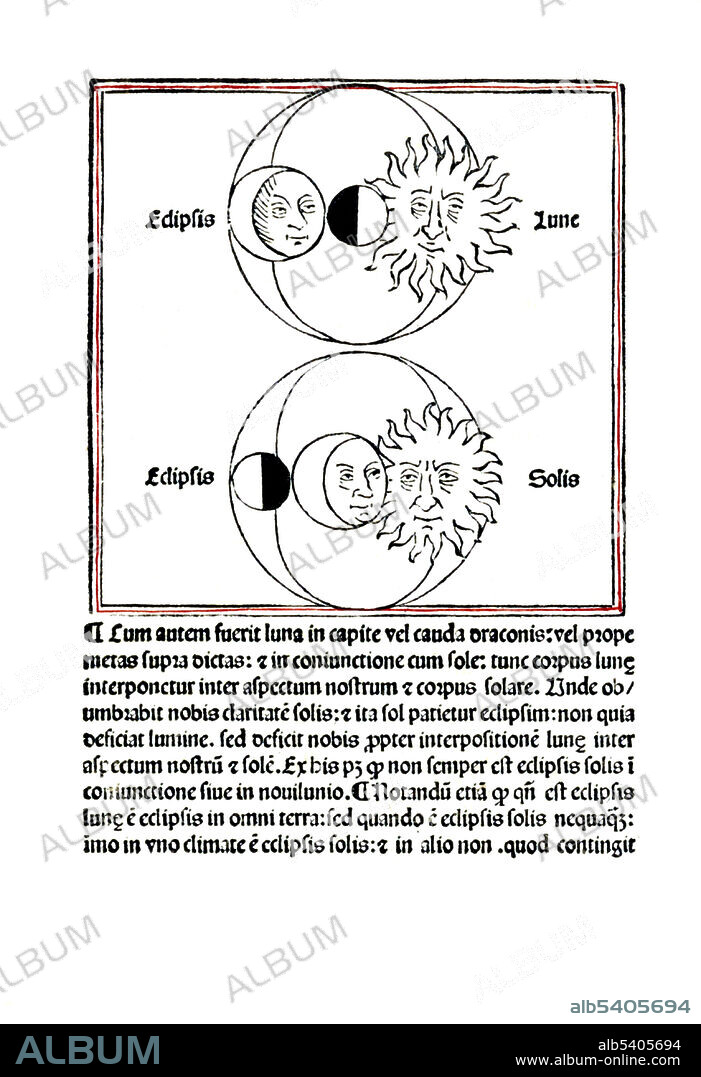alb5405694
Johannes de Sacrobosco, Solar and Lunar Eclipse, 13th C

|
Añadir a otro lightbox |
|
Añadir a otro lightbox |



¿Ya tienes cuenta? Iniciar sesión
¿No tienes cuenta? Regístrate
Compra esta imagen.
Selecciona el uso:

Título:
Johannes de Sacrobosco, Solar and Lunar Eclipse, 13th C
Descripción:
Ver traducción automática
De sphaera mundi is a medieval introduction to the basic elements of astronomy written by Johannes de Sacrobosco, circa 1230. Johannes de Sacrobosco (circa 1195, circa 1256), was a scholar, monk and astronomer who was a teacher at the University of Paris. He wrote a short introduction to the Hindu-Arabic numeral system which became the most widely read introduction to that subject in the later medieval centuries (judging from the number of manuscript copies that survive today). He also wrote a short astronomy textbook, De sphaera mundi, which was widely read and influential in Europe during the later medieval centuries as an introduction to astronomy. In De Anni Ratione, his longest and most original book, Sacrobosco correctly described the defects of the then-used Julian calendar, and, three centuries before its implementation, recommended a solution much like the modern Gregorian calendar.
Crédito:
Album / LOC/Rare Book Selections/Science Source
Autorizaciones:
Tamaño imagen:
3080 x 4500 px | 39.7 MB
Tamaño impresión:
26.1 x 38.1 cm | 10.3 x 15.0 in (300 dpi)
Palabras clave:
ARTE • ASTRONOMIA • ASTRONÓMICO • ECLIPSE • EN • ESFERA • FAMOSA • FAMOSO • FAMOSOS • HISTORIA • HISTORICO • HOLLYWOOD • ILUSTRACION • ILUSTRACIONES • IMPORTANTE • LUNAR • MEDIA • MEDIEVAL • MIDDLE • MUNDO • OBRA DE ARTE • S. XIII • SACROBOSCO • SIGLO XIII • SIGLO • SOLAR


 Pinterest
Pinterest Twitter
Twitter Facebook
Facebook Copiar enlace
Copiar enlace Email
Email
